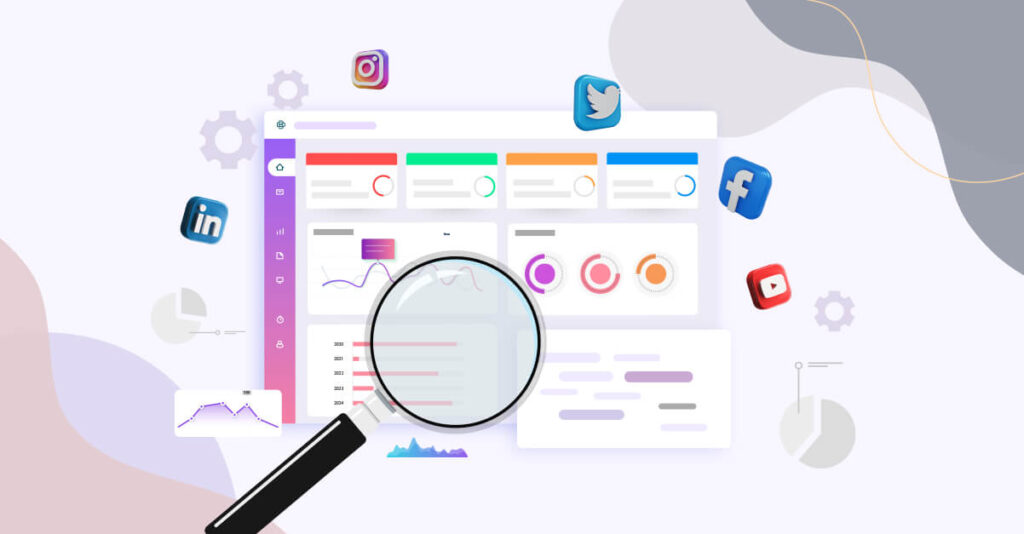In today’s digital age, where communication happens predominantly through social media platforms, businesses and individuals alike are constantly seeking ways to stay ahead of the curve. One such method gaining prominence is social listening. This article delves into the evolving landscape of social listening, explores emerging trends, discusses its importance, and provides insights into best practices for effective implementation.
1. What is Social Listening?
Social listening refers to the process of monitoring digital conversations to understand what customers are saying about a brand, product, or industry. It involves tracking mentions, discussions, and sentiment across various social media channels and online platforms. Unlike social media monitoring, which focuses on tracking specific keywords or hashtags, social listening involves analyzing broader conversations and extracting actionable insights.
2. Evolution of Social Listening
The concept of social listening has roots in traditional market research and customer feedback mechanisms. However, with the advent of social media, the practice has evolved significantly. What started as manual tracking of mentions and comments has now transformed into sophisticated algorithms and AI-powered tools capable of analyzing vast amounts of data in real-time.
3. Current Landscape of Social Listening
The current landscape of social listening is characterized by a myriad of tools and platforms designed to help businesses monitor and analyze online conversations. From established players like AIM Insights and Sprout Social to niche startups offering specialized services, there’s no shortage of options for organizations looking to harness the power of social listening.
Social Listening Trends
1. AI and Machine Learning Integration
One of the most significant trends in social listening is the integration of artificial intelligence and machine learning algorithms. These technologies enable more accurate sentiment analysis, trend prediction, and personalized insights, allowing businesses to make data-driven decisions with greater confidence.
2. Real-time Analytics
Real-time analytics capabilities have become essential in the world of social listening. With the speed at which information spreads across social media, businesses need to be able to identify and respond to trends and crises as they unfold. Real-time analytics tools empower organizations to stay agile and proactive in their approach to social media management.
3. Sentiment Analysis Advancements
Advancements in sentiment analysis technology have made it possible to gauge the emotional tone behind online conversations with greater accuracy. From detecting sarcasm to understanding cultural nuances, these advancements enable businesses to gain deeper insights into customer perceptions and preferences.
Importance of Social Listening Trends
The evolving landscape of social listening trends holds immense importance for businesses across industries. By staying abreast of the latest developments and leveraging advanced analytics tools, organizations can gain a competitive edge in the market. From identifying emerging trends to mitigating potential crises, social listening trends play a pivotal role in shaping marketing strategies and driving business growth.
Challenges
Despite its numerous benefits, social listening is not without its challenges. Data privacy concerns, for instance, have become a growing issue in an era where consumer privacy is a top priority. Additionally, the sheer volume of data generated on social media can be overwhelming, making it difficult for businesses to extract meaningful insights without the right tools and expertise.
Best Practices for Effective Social Listening
To reap the full benefits of social listening, organizations must adhere to best practices that ensure accuracy, relevance, and actionable insights. Also, this includes setting clear objectives, choosing the right tools and technologies, and integrating social listening findings into broader marketing and business strategies.
Case Studies
Example 1: Brand Monitoring
Company XYZ implemented a comprehensive social listening strategy to monitor mentions of their brand across various social media channels. Also, by analyzing customer feedback and sentiment, they were able to identify areas for improvement and enhance their products and services accordingly.
Example 2: Crisis Management
During a product recall crisis, Company ABC leveraged social listening tools to monitor online conversations and sentiment in real-time. Also, by promptly addressing customer concerns and providing transparent communication, they were able to mitigate reputational damage and maintain customer trust.
Future Outlook of Social Listening
Looking ahead, the future of social listening holds immense promise. With advancements in AI, machine learning, and natural language processing, we can expect even more sophisticated tools and techniques for analyzing online conversations. From predictive analytics to sentiment forecasting, the possibilities are endless, offering businesses unprecedented insights into consumer behavior and market trends.
Conclusion
In conclusion, social listening trends are reshaping the way businesses understand and engage with their audience online. By embracing emerging technologies and best practices, organizations can unlock valuable insights that drive informed decision-making and foster meaningful connections with their customers. If you’re ready to take your social listening strategy to the next level, don’t hesitate to request a demo from AIM Technologies. Experience firsthand how our advanced tools and expertise can help elevate your brand’s online presence and drive success in the digital landscape.
FAQs
What is the difference between social listening and social media monitoring?
- Social listening involves analyzing broader conversations and extracting actionable insights from social media and online platforms, whereas social media monitoring focuses on tracking specific keywords or hashtags.
How can businesses overcome data privacy concerns associated with social listening?
- Businesses can address data privacy concerns by being transparent about their data collection practices, obtaining explicit consent from users, and complying with relevant regulations such as GDPR.
What role does sentiment analysis play in social listening?
- Sentiment analysis helps businesses gauge the emotional tone behind online conversations, enabling them to understand customer perceptions and preferences more effectively.
How can organizations integrate social listening findings into their marketing strategies?
- Organizations can integrate social listening findings into their marketing strategies by identifying key insights and trends, tailoring their messaging to resonate with their target audience, and monitoring the impact of their campaigns in real-time.
What are some emerging technologies shaping the future of social listening?
- Emerging technologies such as artificial intelligence, machine learning, and natural language processing are poised to revolutionize social listening by enabling more accurate sentiment analysis, trend prediction, and personalized insights.





